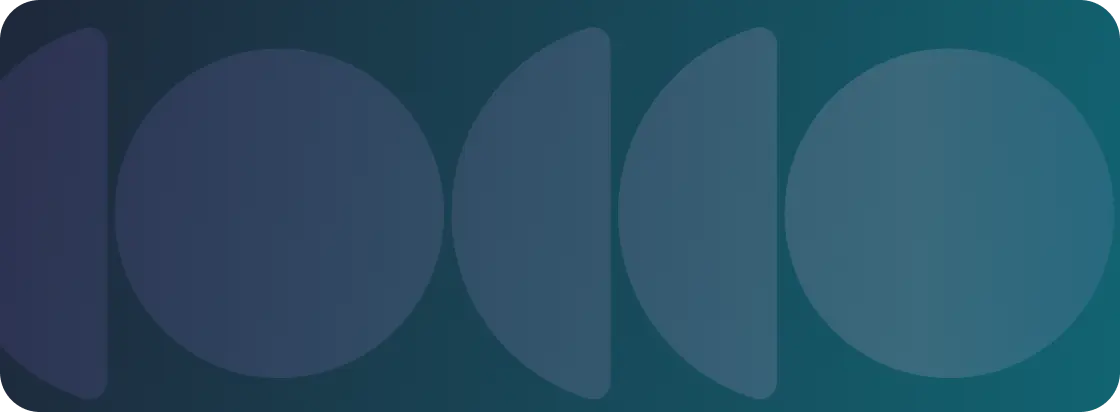Best Of
Longitudinal Study: Definition, Types & Examples
Article written by Kate Williams
Product Marketing Manager at SurveySparrow
12 min read
24 June 2025

60 Seconds Summary:
Imagine tracking the same person's health, habits, or preferences over years—this is the essence of a longitudinal study. Unlike one-time surveys, these studies offer a dynamic view of how individuals evolve over time. They're invaluable in fields like psychology, medicine, and market research, helping to uncover trends, identify risk factors, and understand causal relationships. Whether you're a researcher aiming to study behavioral changes or a business looking to grasp shifting consumer preferences, longitudinal studies provide the depth and continuity needed to make informed decisions.
Imagine this: Sara is a regular user of a grocery delivery app, once indicating she preferred regular eggs over free-range ones due to budget constraints. Months later, after watching a documentary about poultry farming, her preferences completely changed—yet the app had no way of capturing this shift in her values.
This is exactly why one-time surveys often fall short. Consumer trends and behaviors constantly evolve, and yesterday’s data might not reflect today’s reality.
That’s why your business needs to understand what a longitudinal study is.
At times, a one-off survey simply isn’t enough to give you the data you need. If you need to observe certain trends, behaviors, or preferences over time, you can use a longitudinal study.
What is a Longitudinal Study?
A longitudinal study is a research method that involves repeated observations of the same variables (such as people, trends, or behaviors) over extended periods of time. Unlike cross-sectional studies that provide a snapshot at a single moment, longitudinal studies track changes and developments.
The simplest way to understand what is a longitudinal study is to think of it as a survey taken over time. The passing of time could influence the responses of the same person to the same question. Like Sara, her preferences for eggs changed since she watched the documentary. That’s the kind of thing that longitudinal research design measures.
Longitudinal studies are used in fields like:
Clinical psychology to measure a patient’s thoughts over time
Market research to observe consumer trends
Political polling and sociology, observing life events and societal shifts over time
Longitudinal research design is also used in medicine to discover predictors of certain diseases
We are dealing with nuanced changes over time here, and surveys excel at capturing these shifts in attitudes, behaviors, and experiences. Unlike one-time snapshots, surveys repeated over time enable you to track trends and understand how variables evolve. Plus, it is cost-effective and flexible in terms of reach!
For instance, SurveySparrow’s Recurring Surveys let you schedule and automate the entire process.

With this feature, you can share periodic surveys at any frequency that you set. Also, give a slight nudge to those silent respondents over a friendly reminder via email. The best part? The platform’s conversational surveys reap a higher response rate.
But don’t take my word for it. Why don’t you take it for a spin today and see for yourself?
A personalized walkthrough by our experts. No strings attached!
Types of Longitudinal Studies

When talking about what is a longitudinal study, we cannot go without also discussing the types of longitudinal research design. There are different studies based on your needs. When you understand all three types of longitudinal studies, you’ll be able to pick out the one that’s best suited to your needs.
Panel Study
When we want to find out trends in a larger population, we often use a sample size to survey. A panel study simply observes that sample size over time. By doing so, panel studies can identify cultural shifts and new trends in a larger population.
Panel studies are designed for quantitative analysis. Through the data from online surveys, you can identify common patterns in the responses from your sample (which remain the same over time). A comprehensive dashboard will help you make informed decisions.

But what’s the need to visualize?
In panel studies, the same set of people must be studied over time. If you pick a different sample, variations in individual preferences could skew your results.
Observing the same set of people can make sure that what you’re observing is a change over time. Visualizing the change over time will give you a clear idea of the trends and patterns, resulting in informed and effective decision-making.
Cohort Study
A longitudinal cohort study is one in which we study people who share a single characteristic over a period of time. Cohort studies are regularly conducted by medical researchers to ascertain the effects of a new drug or the symptoms of a disease.
In cohort studies, the behaviors of the selected group of people are observed over time to find patterns and trends. Often, these studies can go on for years. They can also be particularly useful for ascertaining consumer trends if you’re trying to research consumers with a specific common characteristic. An example of such a study would be observing the choice of cereal for kids who go to Sunshine Elementary School over time.
If you’re confused between panel studies and cohort studies, don’t worry. The one key difference between cohort studies and panel studies is that the same set of people has to be observed in the latter. In cohort studies, you can pick a different sample of the same demographic to study over time.
Retrospective Study
A retrospective longitudinal study is when you take pre-existing data from previous online surveys and other research. The objective here is to put your results in a larger timeline and observe the variation in results over time. What makes retrospective studies longitudinal is simply the fact that they’re aimed at revealing trends over time.
When understanding what is a longitudinal study, it’ll be well worth your while to look into retrospective studies. For your company, retrospective longitudinal studies can reveal crucial insights without you having to spend a single dime. Since these studies depend on existing data, they not only don’t cost much themselves but also improve the returns from your earlier research efforts.
How can retrospective longitudinal studies be useful to you? Let’s assume, for example, that you conduct an employee engagement survey every year. If your organization has done these surveys for the past 10 years, you now have more than enough material to conduct a retrospective study. You can then find out how employee engagement at your company has varied over time.
Pros and Cons of Longitudinal Research Design
Like with every research method, longitudinal studies have their advantages and disadvantages. While trying to understand what is a longitudinal study, it is important to get the particular ways in which they’re useful, and situations in which they’re not. Let’s go over some of the major pros and cons of longitudinal surveys.
Advantages of Longitudinal Studies
- Rigorous Insights: A one-off online survey, no matter how well designed, is only so rigorous. Even though the results are often useful, sometimes you need more rigor in your surveys. A longitudinal survey, by observing respondents over time, can offer more rigorous results.
- Long-term Data: When thinking about what is a longitudinal study, it is crucial to understand that it is best used for a specific type of data collection. When you need to understand trends over the longer term, longitudinal studies are best suited to that task.
- Discover Trends: Most companies, in one way or another, rely on trends they estimate will be relevant in the future. Longitudinal studies can be great at finding out those trends and capitalizing on them before the competition.
- Open To Surprises: When designing an online survey, it is very tough to allow for surprises. Mostly, you get what you ask for. With longitudinal surveys, you’re allowing for the possibility that you might spot patterns you didn’t imagine could exist. Longitudinal studies are more flexible in that regard and allow us to discover the unexpected.
Disadvantages of Longitudinal Studies
- Higher Costs: Because longitudinal research needs to be conducted over time, and in some cases with the same set of people, they end up being costlier than one-off surveys. From conducting the observations to analyzing the data, it can add up financially. Using a cost-effective online survey tool like Surveysparrow can be one way to reduce costs.
- More Demanding: One of the biggest challenges you can face while conducting a survey is to get enough respondents. Even for normal online surveys, it can be tough to get people to take your survey. Longitudinal surveys are far more demanding, so it is unlikely that anyone will participate without strong incentives.
- Unpredictability: While unpredictability can sometimes be a good thing, at times it can also lead the whole exercise astray. The success of a longitudinal study depends not just on the resources you invest in it, but also on the respondents who have to participate in a long-term commitment. Things can go wrong when respondents are suddenly unavailable. That’s why there’s always an element of unpredictability with longitudinal surveys.
- Time-Consuming: Unlike simple online surveys, you don’t get the results instantly with longitudinal surveys. They require a certain vision, and you have to be patient enough to see it through to get your desired results.
Examples of Longitudinal Surveys
Longitudinal surveys have been used by researchers and businesses for a long time now, so there is no dearth of examples. Let’s walk through a few of them so you can better understand what is a longitudinal survey.
Australia’s ‘45 and Up’ Survey
There is no better example to understand what longitudinal research is than the 45 and Up study being conducted in Australia. It aims to understand healthy aging and has 250,000 participants who are aged 45 or older. The idea is to get a better idea of Australians’ health as they age.
Such a study needed to be a longitudinal survey since you can only understand the effects of aging en masse by considering the results over time. The results from this study are being used in areas like cardiovascular research and preventable hospitalizations.
Smoking and Lung Cancer
To understand the effects of smoking, you need to be able to assess its consequences over time. The British Doctors Study, which ran from 1951 to 2001, yielded results that strongly indicated the link between smoking and lung cancer. If not for longitudinal research methods, we might never have known.
Even though the research was first published in 1956, the study went on for almost half a century after that. When thinking about what is a longitudinal study, we must also consider that these studies give results while they’re ongoing. Conclusively proving the link between smoking and cancer required a robust, longitudinal survey.
Growing Up In Ireland
Started in 2006, Growing Up In Ireland is a longitudinal study conducted by the Irish government to understand what children’s life looks like in different age brackets. One cohort that the study started following at 9 years of age is now 23. The long-term study can yield interesting results by following a set of children throughout their childhood.
The thing to remember when thinking about what a longitudinal study is is that they can have broad objectives. You can go in without really knowing what you’re trying to find and what that might lead to. You can then use the surprises along the way to generate actionable insights.
When to Use Longitudinal Studies for Your Business
Longitudinal studies are particularly valuable when:
You need to understand how customer preferences evolve over time
You want to measure the long-term impact of product changes or marketing campaigns
You’re trying to identify emerging trends before competitors
You need to track the development of brand loyalty or customer satisfaction
You want to understand seasonal patterns in customer behavior
Implementing your own longitudinal study
Ready to implement a longitudinal study for your business? Here’s how to get started:
Define your research objective - What specific changes or trends do you want to track?
Choose the appropriate type - Panel, cohort, or retrospective based on your needs
Design your survey instrument - Create questions that will remain relevant over time
Set your measurement intervals - Determine how frequently you’ll collect data
Plan for participant retention - Develop strategies to minimize attrition
Implement with the right tools - Use SurveySparrow’s recurring survey features to automate the process
Wrapping Up
If you started out wondering what is a longitudinal study, we hope that we’ve addressed that question and more in this article. If you want to create a longitudinal survey, don’t forget to first plan out your survey. A retrospective study, like we just talked about, can also be a great solution to your problems.
Here at SurveySparrow, we love surveys of all kinds. For certain types of questions, you need to conduct longitudinal surveys, and we’re here to support you through the process. With our online templates and intuitive UI, conducting a longitudinal survey will be much easier.
What we love about recurring surveys is the surprising results they can yield. That is really what drives us at Surveysparrow, that you might find something in the results you didn’t expect, and it might change the course of your company for the better.
Take it for a spin and see for yourself. It won’t even cost you a penny!

Explore Deeper Customer Insights with SurveySparrow
A personalized walkthrough by our experts. No strings attached!
Start 14 Days free trial

Kate Williams
Excels in empowering visionary companies through storytelling and strategic go-to-market planning. With extensive experience in product marketing and customer experience management, she is an accomplished author, podcast host, and mentor, sharing her expertise across diverse platforms and audiences.
Frequently Asked Questions (FAQs)
A longitudinal study is a research method that involves repeated observations or measurements of the same individuals over an extended period.
The duration of a longitudinal study can vary widely, from a few months to several decades. The key characteristic is the repeated observation of the same subjects over time, regardless of the study's length.
A longitudinal study tracks the same individuals over time to observe changes and developments, whereas a cross-sectional study examines different individuals at a single point in time. This makes longitudinal studies more suitable for identifying trends and causal relationships.
Longitudinal studies offer several benefits, including the ability to observe changes over time, identify causal relationships, and track individual trajectories. They are particularly useful in fields like psychology, medicine, and education.
Some challenges of longitudinal studies include their time-consuming nature, potential for participant dropout, and the need for significant resources. Additionally, they may be subject to biases such as selective attrition.
Related Articles

Best Of
8 Simple Yet Powerful Ways to Use NPS to Increase Sales
17 MINUTES
20 April 2020

Customer Experience
All You Need To Know About Customer Retention - The Ultimate Guide
13 MINUTES
10 January 2020

Marketing
Email Campaigns with Gonanrix: The All-in-One Solution for Marketing Automation
7 MINUTES
17 October 2024

Best Of
60+ Must Ask 360 Review Questions For Performance Evaluation
17 MINUTES
30 June 2022
